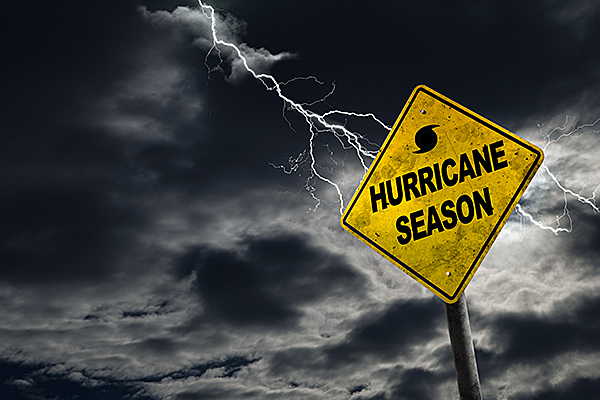Hurricane Prep CheckList for Your Plane

As your insurance company, we are offering some practical recommendations about how to plan for hurricanes, and advice on securing your plane before a storm makes landfall. Please note that these recommendations do not constitute directives for our insured customers. Your insurance policy is the sole and definitive source for understanding your responsibilities as a policyholder and our obligations as an insurer. And please remember, in the bigger picture, human safety always comes first, property second.
- Have a contingency plan for relocating aircraft to airfields outside of the projected hurricane path. By maintaining a current list of airports and their contact information, pilots can make informed decisions that take into account the most accurate projections for size and direction of the storm.
- Sometimes, the best or only alternative is to leave the aircraft in its current location, based on personal and external circumstances.
- Wind is the primary threat. Hurricane winds come from different directions as the eye passes over. If the eye passes a few miles to the north or south, the strongest winds will be from just one direction, and you should make every effort to tie your plane down so that it will face the wind.
- Using both an external control lock and an internal control lock (for example, a lap belt around the control yoke) may prevent wind damage to the control surfaces due to excess movement or buffeting from the wind. We advise plane owners to consult with local weather experts as a storm approaches and heed their counsel regarding likely wind direction.
- During hurricane season, saturated ground can prove unreliable for tie-down anchors. Moreover, rope and chain-strength is a key factor in determining whether an aircraft will remain firmly tethered or will break free.
- For our customers living in hurricane-vulnerable areas, our advice is to invest in top-caliber rope or chain, verify its original strength rating annually, make sure the ends are not frayed, and double it up as a storm approaches. We also caution pilots to monitor the level of ground saturation from previous rainstorms if their anchors are fixed in natural soil. Anchors secured in concrete are always the best option.
- Torrential rainfall and flooding – if flood levels reach the fuselage or engine compartments of your aircraft, most likely the plane will be a total loss. If your airport is in a low-lying area or alongside a body of water, moving to higher ground might save your plane. You may want to contact local government agencies to learn which airfields are located in flood plains and choose your home base accordingly.
- Hangars are susceptible to collapse in the event of major hurricane winds, but as a rule they provide the best protection for aircraft during severe storms. Quality of construction varies greatly among hangars, so you may wish to compare structures in your area and assess the benefit of paying more to secure your plane in a stronger structure.
In the aftermath of a hurricane, Avemco® works as quickly as possible to handle the claims of all affected customers. At the same time, we urge our policyholders to exercise patience in allowing emergency crews to conduct their work. We don’t want to see one tragedy compounded by another.
Given the unpredictable nature of hurricanes, even the best plans can collapse in the face of a storm. What is predictable, however, is the service that Avemco provides in helping customers assess their level of risk before a hurricane ever hits, and quickly resolving any damage issues should one occur. While we can’t prevent the next hurricane, we can certainly help you be prepared to face it and recover from it.
If you have any questions, please don’t hesitate to call us during normal business hours M-F 9:00 am – 6:00 pm Eastern at (800) 638 8440. You can also submit a claim at that number or at Avemco.com.
For a quote or additional information, please visit: www.avemco.com.
Articles and news items provided by Avemco are not intended to provide technical or legal advice. Content is for general information and discussion only and is not a full analysis of the matters presented. The information provided may not be applicable in all situations, and readers should always seek specific advice from the FAA and/or appropriate technical and legal experts before taking any action with respect to any matters discussed herein.



